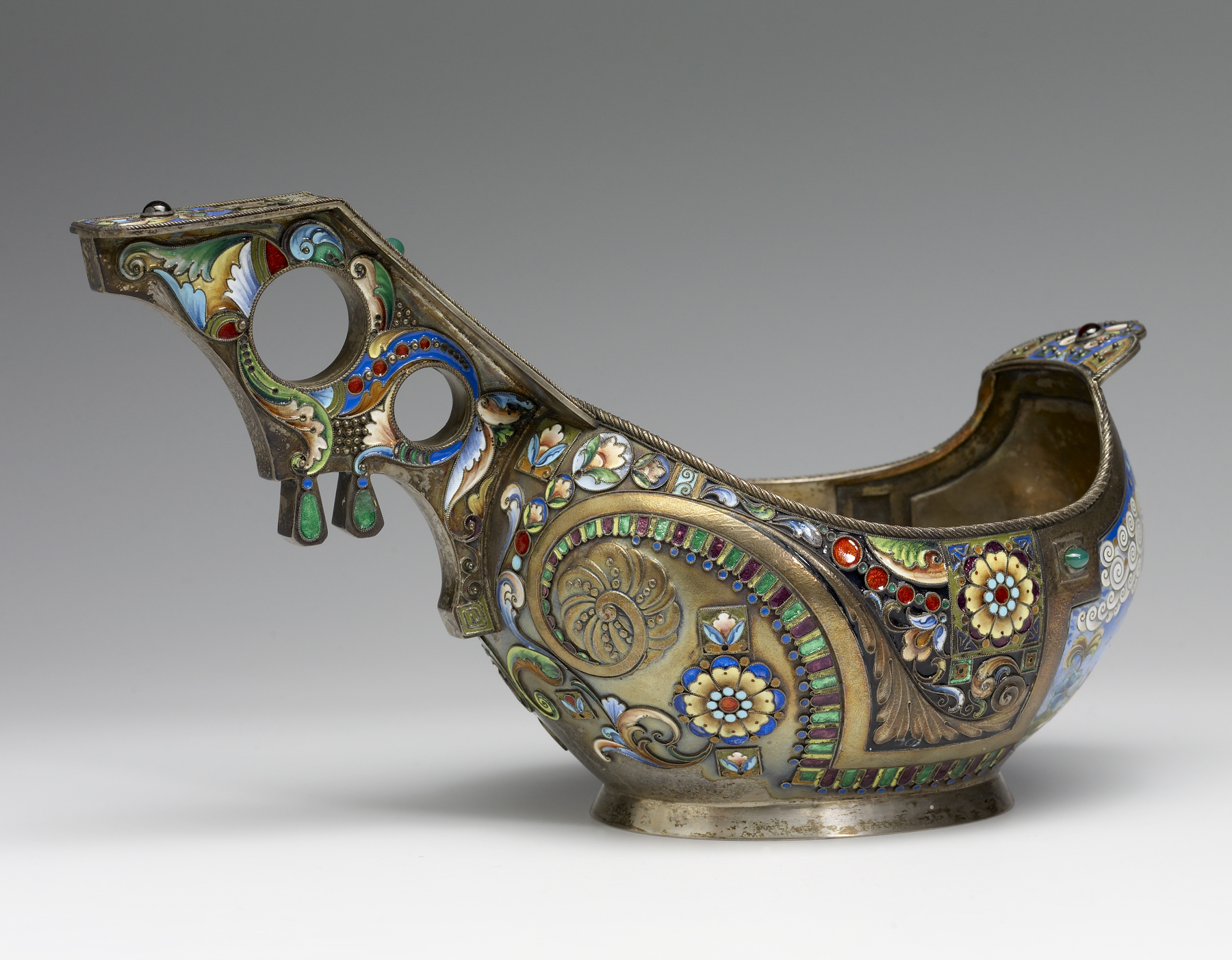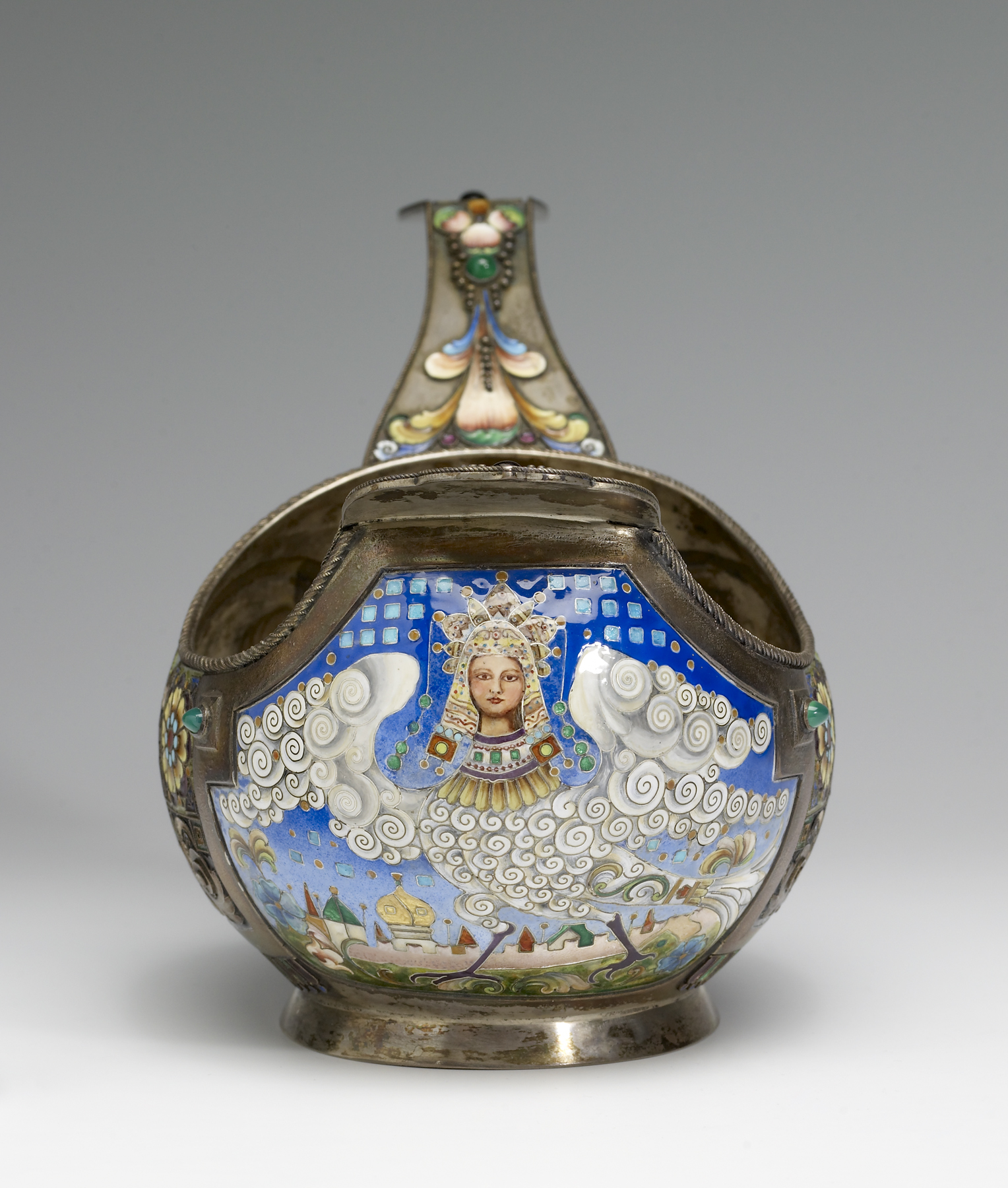Kovsh with Sirin
(18th and 19th Centuries )
What is particularly unusual with this kovsh is the use of the cloisonné rather than the filigree technique in creating the image of the Sirin. That is to say, flat rather than twisted wires separate the fields of color and their edges are flush with the surface rather than rising above it.
The mythological creature's face and her particularly elaborate crown, headdress, and collar have been painted with naturalistic detail. Her torso and extended wings are rendered with grayish white scrolls suggestive of plumage. At her feet is depicted a terem with a gilded onion dome and tower roofs in foiled translucent enamel. The sky is in graduated shades of blue and is dotted with patterns of turquoise squares and red circles.
The remaining surfaces are decorated with formal designs in painted filigree over a silver gilt surface, which, in turn, has been worked in repoussé with raised patterns of bands, scrolls, and foliage. The decoration is characterized by the abundance of square and circular motifs; the use of foiled, translucent enamel, particularly in bright red segments juxtaposed against those in black; and the restrained abstract flowers. On the handle and the front lip there are also patterns of raised, silver gilt balls. Variously colored cabochon hardstones have been applied on either side of the bowl and on the handle.
Inscription
Provenance
Provenance (from the French provenir, 'to come from/forth') is the chronology of the ownership, custody, or location of a historical object. Learn more about provenance at the Walters.
Sotheby's, Geneva, May 15, 1986; Jean M. Riddell, Washington, D.C., May 15, 1986, by purchase [Leo Kaplan, New York, as agent]; Walters Art Museum, 2010, by bequest.
Geographies
Russia, Moscow (Place of Origin)
Measurements
H: 5 1/4 x W: 9 1/2 x D: 4 9/16 in. (13.4 x 24.1 x 11.6 cm)
Credit Line
Bequest of Mrs. Jean M. Riddell, 2010
Location in Museum
Not on view
Accession Number
In libraries, galleries, museums, and archives, an accession number is a unique identifier assigned to each object in the collection.
In libraries, galleries, museums, and archives, an accession number is a unique identifier assigned to each object in the collection.
44.815




